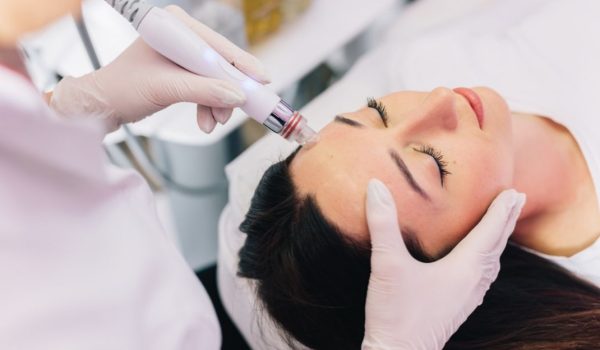How To Inject Dermal Fillers
-
By: Adam Diwan
-
July 1, 2022
Dermal fillers are substances that can be injected into a person’s face or lips by a medical professional.
Someone may seek this type of treatment if they would like to reduce the appearance of wrinkles, or to add volume to their lips.
Dermal fillers contain hyaluronic acid, which is a natural sugar found in the body, such as in our skin and joints. This natural sugar helps us to retain moisture in order for our skin to be hydrated and to keep joints lubricated. However, as we age, the natural production of hyaluronic acid can slow down, which can affect the appearance of our skin and lips.
As mentioned above, dermal filler needs to be injected by a medical professional; however, below we have provided a brief outline of what’s involved in the treatment, so you know what to expect if you should decide to book an appointment to have dermal fillers.
Dermal Filler Treatment: What’s Involved?
Pre-Treatment Consultation:
A medical professional will evaluate areas of concern as well as enquire about your medical history to make sure that the fillers are appropriate for you. They will take into account any medications you are currently on, any allergies, and any recurring illnesses. Certain medications can increase the likelihood of bruising after dermal filler treatment, so this is why it is very important that the medical professional knows exactly what medication you are taking.
The Procedure Appointment:
The area(s) being treated will be cleaned, sterilised and a numbing cream will be applied. This will be discussed beforehand to ascertain whether you wish to have numbing cream applied. Some fillers already contain lidocaine. If this is the case, a numbing cream will not be necessary.
It does depend on the area being injected with dermal filler, but you should expect the treatment to take around thirty minutes.
Revolve Medicare sell lidocaine, which is a numbing cream for medical professionals to purchase to help relieve pain for their client’s before receiving dermal filler treatment.
How is Dermal Filler Injected?
There are different types of dermal filler techniques that a medical professional might use to inject. For example:
- Tunnelling Technique – A preferred technique to use on wrinkles and fine lines. It is suitable for treatment of superficial skin wrinkles and/or deep lines. This is considered the safest way to inject dermal fillers. The medical professional will inject a needle at a 30-45 degree angle in the direction of the wrinkle.
- Point Technique – Also known as the ‘multi-puncture- technique. Several small droplets of filler are injected into the deeper layers of outer skin (deep dermis). The aim is to reduce the appearance of wrinkles by lifting the skin beneath them.
- Stretching Technique – Before the filler is injected, the skin around the wrinkles will be stretched to isolate the area of treatment. Stretching the skin makes it easier for the medical professional to get the correct angle for injection.
- Dual Plane Technique – The filler is administered within two different levels of skin in a single area. This is commonly the dermis (middle layer) and the subdermal plane (directly below the skin).
Dermal Filler Aftercare
There are several activities and substances to avoid after having dermal filler treatment. A medical professional will give advice and recommend pain relief if required, although the pain after treatment is usually mild, so anything stronger than paracetamol is not usually necessary.
Below are just a few things to avoid after having dermal filler treatment:
- Limit exercise for 48 hours.
- Avoid alcohol for 48 hours.
- Try to avoid too much sun exposure for at least two weeks after treatment.
- Do not wear make-up for 24 hours.
- Avoid anything that will irritate the skin such as facials or facial waxing.
By following the above advice, this should reduce the likelihood of bruising and/or swelling after treatment.
We hope that you’ve found this blog useful. Whether you are a medical professional, or someone wondering whether dermal filler treatment is right for you, you’ll hopefully understand a little more about dermal fillers, what the treatment involves, and the things that should be avoided to limit negative effects.
Revolve Medicare sell various dermal fillers for medical professionals to order online.
Related Posts
-
By: Adam Diwan
-
September 23, 2024
How to Start an Aesthetics Business
-
By: Adam Diwan
-
September 23, 2024
Top 5 Fat-Dissolving Products to Use in Your Clinic
-
By: Adam Diwan
-
July 23, 2024
Top 10 Vitamin Injections for Health and Beauty
-
By: Adam Diwan
-
July 2, 2024
How to Switch from Saxenda to Mounjaro
-
By: Adam Diwan
-
June 25, 2024
Mesotherapy vs Microneedling: A Side Effect Guide
-
By: Adam Diwan
-
June 18, 2024











